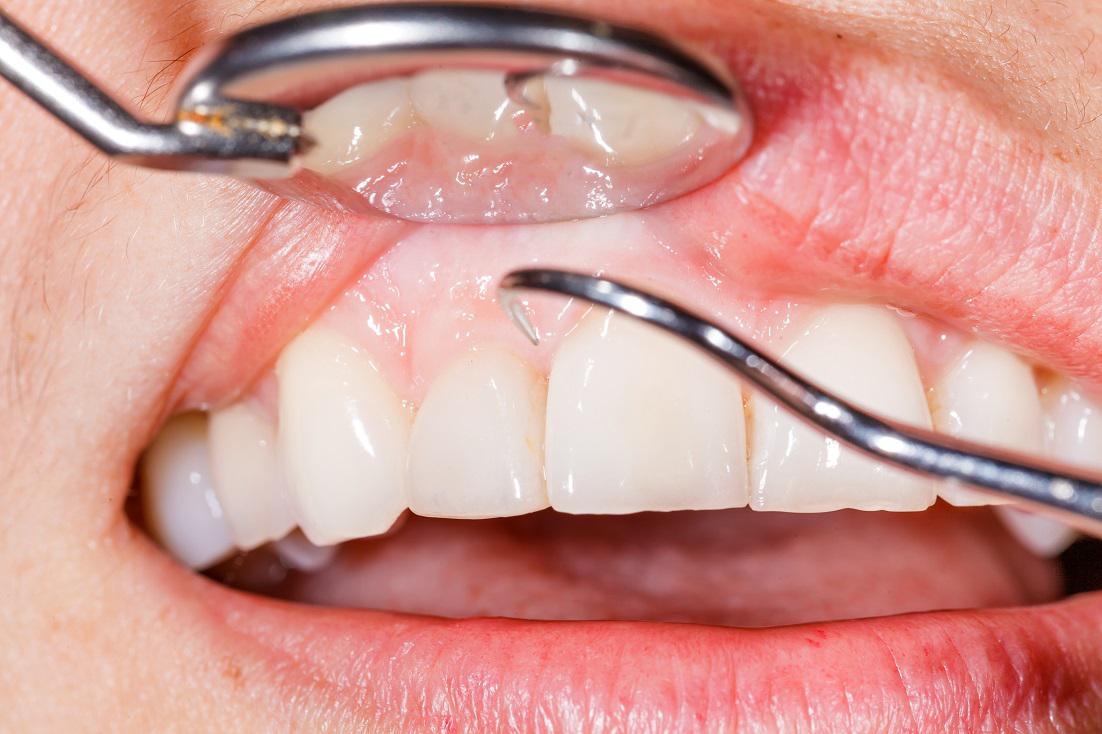Gum Disease
 Gum disease, also known as periodontal disease, is caused by a build-up of plaque and bacteria between the teeth and gums. When left untreated, the gums become infected and if gum disease progresses, it becomes increasingly difficult and painful to treat. Progressed cases of gum disease can also lead to tooth loss.
Gum disease, also known as periodontal disease, is caused by a build-up of plaque and bacteria between the teeth and gums. When left untreated, the gums become infected and if gum disease progresses, it becomes increasingly difficult and painful to treat. Progressed cases of gum disease can also lead to tooth loss.
Symptoms of Gum Disease
Depending on the progression of the disease, symptoms of gum disease may include:
- Swollen and sore gums
- Red or inflamed gums
- Gums that bleed easily
- Gums that recede from the teeth
- Loose teeth
- Chronic bad breath
- Pain when chewing
Causes and Stages of Gum Disease
Gum disease is often caused by a buildup of plaque, a film composed of bacteria that coats the teeth after eating. Plaque that is not removed by brushing the teeth can eventually irritate the gums. When left untreated, gum disease can progress in the following two stages:
Gingivitis
Gingivitis is the first stage of gum disease. At this stage the gums may be swollen, red and inflamed and may bleed easily. Gingivitis can usually be easily treated by a thorough cleaning by a dentist to remove plaque, and proper follow-up care. Patients that maintain proper oral hygiene at home can keep gums healthy and reduce bacteria build-up.
Periodontitis
If left untreated, gingivitis transitions into periodontitis which is a more serious stage of gum disease. At this stage, the gums are extremely inflamed and start to pull away from the teeth. Teeth may begin to loosen due to bones and ligaments breaking down.
Treatment of Gum Disease
A patient is normally referred to a periodontist to treat gum disease. Gum disease is treated based on the severity and progression of the disease. Treatment may include:
Scaling and Root Planing
A deep-cleaning method that removes bacteria from below the gum line and the tooth root. The roots of the teeth are smoothed and cleaned and plaque and bacteria are removed.
Medication
Antibiotics or antimicrobial medications may be used to fight infection and reduce the size of the gum pockets that have occurred because of the gum disease. As the infection subsides, swelling and inflammation are reduced.
Surgery
If other methods of treatment are ineffective, flap surgery may be performed to lift away gum tissue so that it can be cleaned underneath. Gum or bone grafts may also be performed to help regenerate any bone or gum tissue that may have been damaged or lost due to periodontitis.
Prevention of Gum Disease
Plaque is the most common cause of gum disease that can be prevented with proper dental hygiene. Other recommendations to prevent gum disease include:
- Don‘t smoke
- Eat a healthy diet
- Floss and brush teeth daily
- See a dentist regularly
It is important to see a dentist promptly if experiencing the signs of gum disease to prevent more serious complications from occurring.

